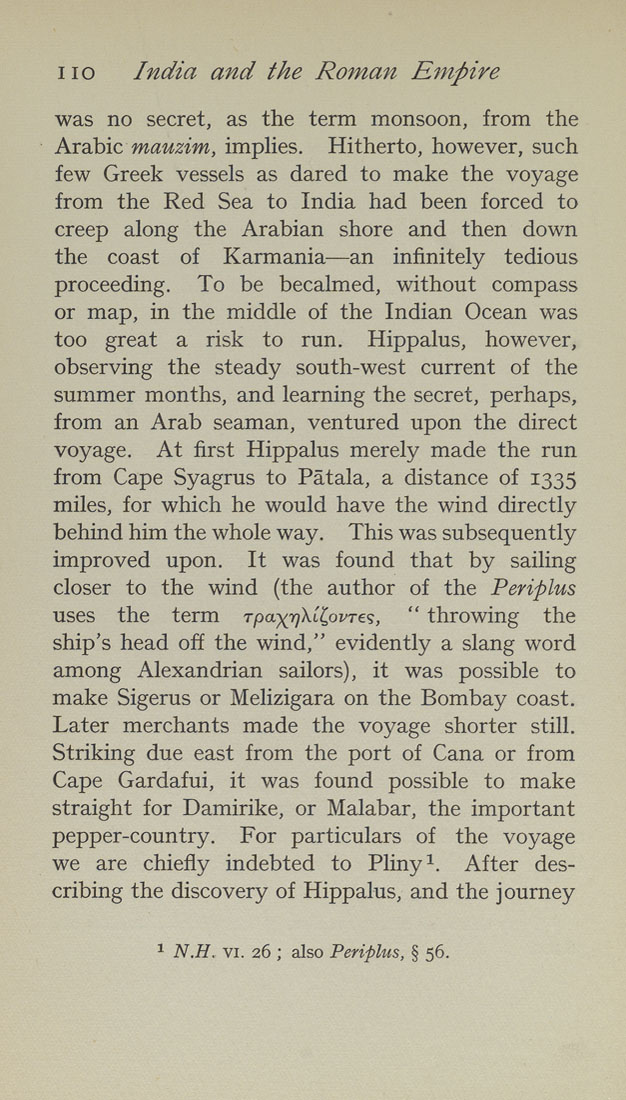no India and the Roman E^npire
was no secret, as the term monsoon, from the
Kx^hia mauzim, implies. Hitherto, however, such
few Greek vessels as dared to make the voyage
from the Red Sea to India had been forced to
creep along the Arabian shore and then down
the coast of Karmania—an infinitely tedious
proceeding. To be becalmed, without compass
or map, in the middle of the Indian Ocean was
too great a risk to run. Hippalus, however,
observing the steady south-west current of the
summer months, and learning the secret, perhaps,
from an Arab seaman, ventured upon the direct
voyage. At first Hippalus merely made the run
from Cape Syagrus to Patala, a distance of 1335
miles, for which he would have the wind directly
behind him the whole way. This was subsequently
improved upon. It was found that by sailing
closer to the wind (the author of the Periplus
uses the term rp(xyrikil,ovre^, " throwing the
ship's head off the wind," evidently a slang word
among Alexandrian sailors), it was possible to
make Sigerus or Melizigara on the Bombay coast.
Later merchants made the voyage shorter still.
Striking due east from the port of Cana or from
Cape Gardafui, it was found possible to make
straight for Damirike, or Malabar, the important
pepper-country. For particulars of the voyage
we are chiefly indebted to Pliny ^. After des¬
cribing the discovery of Hippalus, and the journey
1 N.H. VI. 26 ; also Periplus, § 56.
|








